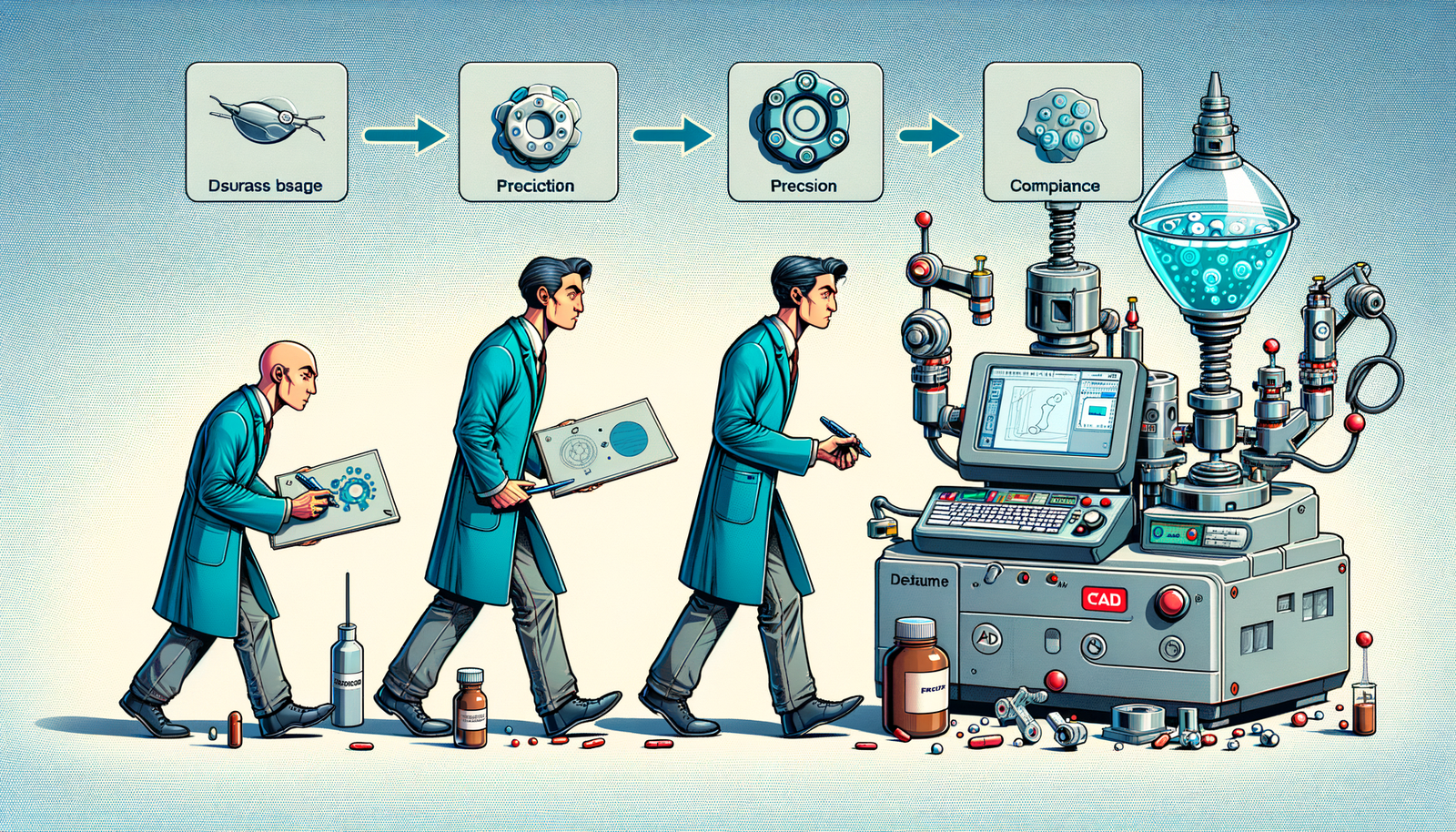Your Cart is Empty
Customer Testimonials
-
"Great customer service. The folks at Novedge were super helpful in navigating a somewhat complicated order including software upgrades and serial numbers in various stages of inactivity. They were friendly and helpful throughout the process.."
Ruben Ruckmark
"Quick & very helpful. We have been using Novedge for years and are very happy with their quick service when we need to make a purchase and excellent support resolving any issues."
Will Woodson
"Scott is the best. He reminds me about subscriptions dates, guides me in the correct direction for updates. He always responds promptly to me. He is literally the reason I continue to work with Novedge and will do so in the future."
Edward Mchugh
"Calvin Lok is “the man”. After my purchase of Sketchup 2021, he called me and provided step-by-step instructions to ease me through difficulties I was having with the setup of my new software."
Mike Borzage
Design Software History: The Evolution of CAD in Pharmaceutical Equipment Design: Precision, Compliance, and Future Innovations
June 12, 2024 4 min read


Introduction to CAD in Pharmaceutical Equipment Design
The pharmaceutical industry stands as one of the most regulated and precision-driven sectors globally. The design and manufacturing processes of pharmaceutical equipment demand stringent adherence to industry standards to ensure safety, efficacy, and compliance. This overview discusses the critical role of Computer-Aided Design (CAD) tools in achieving these objectives, tracing their evolution from manual drafting methods to sophisticated digital solutions.
Overview of CAD in the Pharmaceutical Industry
In the pharmaceutical arena, precision and compliance are paramount. CAD tools have become indispensable in this field, providing the means to design complex equipment with exacting specifications. The role of CAD extends beyond mere design; it encompasses ensuring that the equipment adheres to stringent industry standards, such as those set by regulatory bodies like the FDA (Food and Drug Administration) and EMA (European Medicines Agency). These tools facilitate the rigorous documentation and traceability required for compliance.
Historical Context
The journey from manual drafting to the adoption of digital solutions in pharmaceutical equipment design has been transformative. In the early days, equipment design relied heavily on manual drafting techniques, which were time-consuming and prone to human error. The advent of CAD systems marked a significant shift, allowing for more precise and efficient design processes. Early pioneers, such as Ivan Sutherland with his development of Sketchpad in the early 1960s, laid the groundwork for the digital design revolution.
Key Developments in CAD Tools for Pharmaceutical Equipment
Early CAD Systems and Their Limitations
The initial foray into CAD systems was marked by several software and hardware limitations. Early CAD software was often cumbersome, with limited functionalities and poor user interfaces. The hardware required to run these systems was also prohibitively expensive, restricting access to only the largest pharmaceutical manufacturers. As a result, early adopters faced significant challenges in integrating these tools into their design processes, often having to develop custom solutions to meet their specific needs.
Advances in Solid and Geometric Modeling
The introduction of solid modeling techniques revolutionized CAD tools, offering a more intuitive and accurate representation of three-dimensional objects. Companies such as PTC with their Creo software and Dassault Systèmes with CATIA led these advancements. Solid modeling allowed for more detailed and precise designs, facilitating the creation of complex pharmaceutical equipment with greater ease and accuracy. These tools enabled designers to visualize and manipulate their models in ways that were previously impossible, significantly enhancing the overall design process.
Integration of Simulation and Analysis
The integration of simulation and analysis capabilities into CAD tools has had a profound impact on the design and manufacturing of pharmaceutical equipment. Finite Element Analysis (FEA), for example, allows engineers to simulate and analyze the performance of their designs under various conditions. This capability is crucial in ensuring that pharmaceutical equipment is reliable and safe, as it enables the identification and mitigation of potential issues before physical prototypes are created. The role of simulation in the design process cannot be overstated, as it helps to optimize designs, reduce development times, and ensure compliance with industry standards.
Impact of CAD on Pharmaceutical Equipment Design Process
Streamlining Design and Manufacturing
CAD tools have significantly streamlined the design and manufacturing processes in the pharmaceutical industry. One of the primary benefits is the reduction in design cycle times, as CAD enables faster and more efficient design iterations. This efficiency extends to prototype development, where virtual models can be tested and refined before any physical prototypes are produced. The ability to make quick adjustments and visualize the results in real-time has revolutionized the way pharmaceutical equipment is designed and manufactured.
Regulatory Compliance and Documentation
Meeting regulatory requirements is a critical aspect of pharmaceutical equipment design. CAD tools assist in this area by providing standardized documentation and traceability, which are essential for regulatory compliance. Detailed CAD models and drawings can be easily updated and shared, ensuring that all design changes are accurately documented and traceable. This capability is crucial for meeting the stringent requirements set by regulatory bodies such as the FDA and EMA, and it helps to streamline the approval process.
Future Trends and Innovations in CAD for Pharmaceutical Equipment
Additive Manufacturing and 3D Printing
One of the most exciting developments in the field of CAD for pharmaceutical equipment is the integration of additive manufacturing and 3D printing technologies. These technologies offer significant potential for the rapid prototyping and production of complex equipment components. Current applications include the creation of custom parts and tools, which can be produced quickly and cost-effectively. As these technologies continue to evolve, their impact on the design and manufacturing processes in the pharmaceutical industry is expected to grow, offering new possibilities for innovation and efficiency.
Artificial Intelligence and Machine Learning
Artificial Intelligence (AI) and Machine Learning (ML) are also poised to play a significant role in the future of CAD for pharmaceutical equipment. These technologies can be used to enhance design accuracy and reduce human error, by providing predictive maintenance and optimization capabilities. AI and ML can analyze large datasets to identify patterns and trends, helping to improve the overall design process and ensure that equipment is optimized for performance and reliability.
Virtual and Augmented Reality
Virtual Reality (VR) and Augmented Reality (AR) technologies are becoming increasingly important in the design and maintenance of pharmaceutical equipment. These technologies offer innovative solutions for training, maintenance, and operational efficiencies. For example, VR and AR can be used to create immersive training environments, where engineers and technicians can practice and refine their skills in a virtual setting. Additionally, these technologies can provide real-time support for maintenance and troubleshooting, helping to improve efficiency and reduce downtime.
Conclusion
The evolution of CAD tools has had a profound impact on the design and manufacturing processes of pharmaceutical equipment. From the early days of manual drafting to the sophisticated digital solutions available today, CAD tools have revolutionized the industry, offering new levels of precision, efficiency, and compliance. As we look to the future, emerging technologies such as additive manufacturing, AI, and VR/AR hold significant potential for further advancements, promising to drive continued innovation and improvement in the design and manufacturing of pharmaceutical equipment.
Also in Design News

Cinema 4D Tip: Connect Objects + Delete for clean, export-ready meshes
December 26, 2025 2 min read
Read More
Revit Tip: Revit Conceptual Mass Workflow: Setup, Parametrics, and Conversion
December 26, 2025 2 min read
Read More
V-Ray Tip: Light Linking Best Practices for V-Ray for SketchUp
December 26, 2025 2 min read
Read MoreSubscribe
Sign up to get the latest on sales, new releases and more …


